
Get ready for the Statutory Payments increasing in 2025
Each year statutory payments, employment rates and limits increase, this occurs in April each year, all in all the rises
This Pride month, we’d like to take the opportunity to help educate and inform employers who might find themselves confused by LGBT language. What’s the difference between transgender and transexual? What’s pansexual? And why are there so many terms for different gender identities these days?
We want to walk you through some of that language and help demystify the scene for someone who might never have run into these terms before.
Before we begin, I have to explain a cornerstone of LGBT+ culture that can be very awkward to navigate from the perspective of HR, and that’s the reclamation of slurs. Most of the language used to describe the community found their beginnings in either the medicalisation of LGBT+ identities (homosexual being a medical term for a mental illness), or as slurs that LGBT+ people have decided to make their own to remove the sting from them. Therefore, you might find certain LGBT+ people using terms like queer to describe themselves, and some of those terms might crop up in this article.
Whilst you should not use terms for individuals that they might take offense to, some people might have claimed offensive terms for themselves, removing harmful language from the hands of bullies to wear as a mark of pride.
Though you shouldn’t use that term to describe someone else, you should also be aware and sensitive to the fact many people are very attached to the terms they choose to use for themselves, and it can be just as rude and dismissive to try to police someone else’s language for themselves as it would be to use those words in question yourself. When in doubt, ask for clarification, and take their lead on language, and never assume that two different LGBT+ people will feel the same way about a specific term.
I want to take a moment to speak specifically about the word queer, though I understand that it may raise hackles. This word is academically, very normalised, and I need time to talk about it because if I don’t, it will make moving onto other topics very difficult.
The field of research regarding LGBT+ people is known as queer studies. In film studies, ‘queer theory’ describes an LGBT+ reading of a film. Queer cinema, queer literature, and ‘queering the text’ are all academic terms. It is a preferred term for the community, and is the term I will be using for the rest of the article instead of LGBT+.
The reason for this decision is fourfold – one, because it is the preferred term for the group of people I’m talking about, and it would be disingenuous to use any other term – two, because it is hyper-inclusive and includes many people who feel left out of the LGBT+ acronym – three, because it is the academically correct term to use – and four, because the author of this article is queer and is discussing their own community.
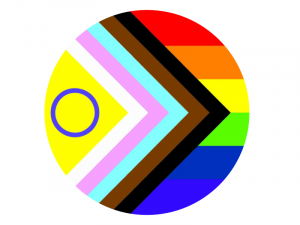
Homosexuality refers to someone who is attracted to their own gender. As this term began as a medical term, Gay and Lesbian are more commonly used and refer to the specific genders involved – gay for men, and lesbian for women, though gay itself is sometimes used as a catch-all term for the entire queer community. In some communities, you might also run into the acronyms MLM (man-loving-man) and WLW (woman-loving-woman), or even NBLNB (nonbinary-loving-nonbinary).
All of these terms describe some form of same-gender attraction, but not always exclusively. For instance, some women describe themselves as bisexual lesbians. This is because, historically, lesbian referred to any woman who loved women, regardless of the exclusivity of that attraction, and the narrowing of the term to refer to exclusive attraction to women is more recent and controversial.
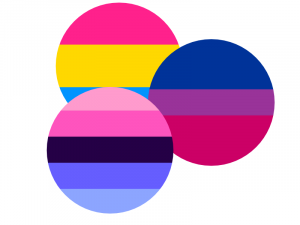
All three of these terms are overlapping but not identical, and their histories run in parallel, because they are all multisexual spectrum terms – terms that describe varying levels of attraction to multiple gender identities. You might hear them described collectively as mspec identities for short. Bisexuality is an attraction to two (or more genders); pansexuality is attraction regardless of gender; and omnisexuality is attraction to all genders. As you can see, all of these terms are subtly different, which is why they are separate identities, even if they all fall under the multisexual spectrum umbrella.
There is no lower limit to how many people of your own gender you have to find attractive to consider yourself bisexual, pansexual, or omnisexual – even if you’ve only ever been attracted to one person of your own gender, it’s perfectly acceptable to call yourself one of those labels, if you feel it fits. Many people later in life realise that not everyone finds their own gender attractive on some level, and that straight people do not experience sexual attraction to their own gender at all.
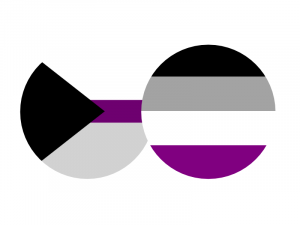
Asexuality is a lack of any kind of sexual attraction to any gender. This is not the same as lacking a libido or a desire to have sex, and asexual people can appear to be in other kinds of queer or straight relationships. Asexuality is not a medical condition – there is nothing wrong with lacking any kind of sexual attraction, and nothing needs to be fixed.
Demisexuality is similar, but a sexual attraction to a partner might appear after a long period of getting to know them. Demisexuals will never develop an attraction to someone they don’t know quite deeply, like a celebrity or someone they meet in the street. This doesn’t mean that they never engage in casual sex – anyone of any sexuality can choose to have or abstain from casual sex. It simply means their sense of attraction doesn’t exist.
Up until now, we’ve only been talking about sexuality – bisexuality, homosexuality, ect. The split attraction model is useful to talk about asexual and aromantic people, however, because it helps to describe someone who might be, for example, an asexual woman in a romantic relationship with another woman. It might not be quite accurate to call her gay, because she’s not sexually attracted to her partner, even though she’s romantically attached.
An accurate description of this woman might be an asexual homoromantic, where -romantic takes the place of -sexual as a suffix to describe her romantic attachment. You can do this with any of the labels we’ve already discussed – panromantic, biromantic, ect.
You can also flip this around to describe people who experience sexual attraction without the desire for any romantic entanglements – the phrase for someone who doesn’t experience romantic attraction is aromantic. So someone who is exclusively sexually attracted to their own gender, but not romantically, would be a homosexual aromantic.
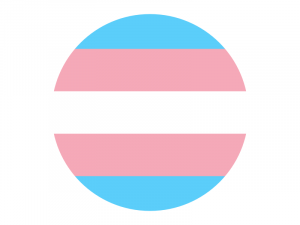
This is an umbrella term for a whole host of different identities. The simplest description is that someone who is transgender identifies with a different identity to the one they were given at birth. For example, someone who was assigned female and transitions later in life to male is a transgender man (shortened sometimes to trans man). Likewise, someone who was assigned male and transitions later in life to female is a transgender woman (trans woman). The easiest way to remember the correct term is that the gender word refers to the gender they have transitioned into.
You may also be familiar with the term transexual or transvestite. These are older terms that are still used by older transexual people. It is derived from the German term seelischer Transsexualismus, (Mental Transsexualism), which was coined by Magnus Hirschfeld in the early 20th century.
Cisgender is a term that you might hear has negative connotations, but it simply isn’t the case. The term simply describes someone who is the opposite of transgender – they identify fully with the gender they were born as, and have no desire to change. It’s a useful term because it helps to destigmatise the term transgender, as the previous term for a cisgender person was ‘normal’ – which of course implies there’s something abnormal or wrong with transgender people.
Not every transgender person identifies with one of the two binary genders. To explain why this might be the case, we need to step back and interrogate our common ideas about sex and gender.
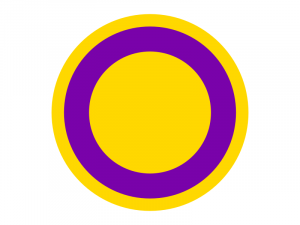
When you ask what defines someone’s sex or gender, you might quickly find yourself trying to pin a tail on an ever-moving donkey. You might try to start with physical characteristics, like genitalia – a man has a penis, and a woman has a vagina. However, intersex people have ambiguous genitalia, and transgender people have surgeries to change their genitalia, so it isn’t actually a very useful model. Some people might try to look deeper at DNA for an answer, but consider someone with XY chromosomes, but complete androgen insensitivity syndrome – their body is incapable of processing testosterone. These people can develop looking indistinguishable from a woman with XX chromosomes, but they have testes instead of ovaries, and no womb at all. Or, consider someone with Kleinfelter syndrome – they have XXY chromosomes!
Intersex conditions like these are quite common – one in a hundred children are born who differ from the standard male and female bodies, and depending on what you consider an intersex condition (there is a compelling argument people with polycystic ovaries are intersex), intersex people are more common than red hair. What I hope to highlight by pointing them out is that sex is a combination of factors, including primary sex characteristics, secondary sex characteristics, hormones, and chromosomes – and though most people will have a combination of these factors that agree, these factors can disagree and vary widely.
Gender is much more complicated than that, and is often extremely cultural. The things that contribute to someone’s sense of gender can include their sexual characteristics, but most people can probably agree that their sense of manhood or womanhood isn’t entirely to do with their body –other things contribute. Their personality, hobbies, clothing, hair, make-up, role in society, role in their families, jobs, and more can all contribute to their sense of gender.
This is why men might feel uncomfortable in dresses – because dresses are coded (that is, they represent) femininity in Western culture, so it’s incongruent with their sense of gender identity – they feel dysphoria.
Transgender people also feel this dysphoria when faced with the sexual characteristics and/or the cultural ideal for their birth gender. But given how many factors go into that sense, and how each one can differ uniquely, someone might come away feeling like neither gender truly represents who they are.
This idea might seem very modern, but it’s actually quite old, and is not remotely unique to Western countries. The Ancient Egyptians of ~2000 BCE described three genders or sexes – male, female, and Sekhet, which could have been an intersex identity, but also could have been nonbinary. The Muxe of Oaxaca (south Mexico) are transfeminine third-gendered individuals, and the label is at least pre-Columbian. Meanwhile, in India, Pakistan and Bangladesh, a third, transfeminine gender known as Hijra is used by a large population of people, and they have legal recognition as a third gender in all of the above countries, plus Nepal. Judaism recognises six genders, including what we would probably considered trans men, trans women, and two different nonbinary identities.
More recently in Western history, a man named Karl Heinrich Ulrichs wrote his first theories about homosexual love in 1862, which included descriptions of people we might consider transgender and nonbinary today. More recently was the work of Magnus Hirschfeld, a German sexologist building on Ulrich’s ideas who developed theories about gender and sexuality in the Institut für Sexualwissenschaft in Berlin in the early 20th century. Hirschfeld identified that a sense of gender identity was made up of essential characteristics – genital anatomy, secondary sex characteristics – and non-essential characteristics, like sexual orientation, gender expression, culturally acquired habits, and other traits. He also argued that very few people have all of these traits aligned to a specific gender identity.
Not all of Hirschfeld’s arguments hold up – many are bound up too tightly in trying to use science to outmanoeuvre an increasingly fascist German state, the ones that would later burn his work in the infamous book burning incident. But these early attempts to explain the fluidity of gender and sex prove that the theories about gender fluidity are much older than most people would assume.
As for 2022, there are groups of people who, for a variety of reasons, feel as though they are neither male nor female – and we call them all nonbinary.
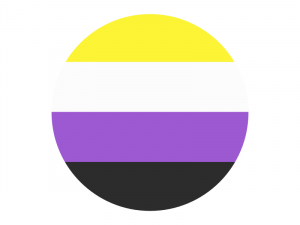
Agender individuals feel as though they have no gender at all, that they are missing that innate feeling most people have of having a gender. They might not even realise most people do in fact have an innate sense of gender at all! Bigender people feel as though they identify with both men and women, and that they are both – sometimes at once, and sometimes switching back and forth. Someone who’s sense of gender changes like this is genderfluid or genderflux. Neutrois people feel their gender is a blend of masculinity and femininity, or simply completely neutral. There are people who believe the gender they feel doesn’t exist within the binary at all and may be third-gendered, or trigender (same as bigender, but with the third, unique gender as well)
Then you might have people who only partially identify with a certain gender – for women, these people are known as demigirls or demiwomen, and for men, demiboys, demiguys or demimen. You can even be born male and only partially identify that way – demiman doesn’t automatically mean moving from female to male, or vice-versa.
Speaking of moving from one gender towards another – the umbrella term for someone who moves into masculinity, whether that is a trans man, a demiguy, or some other nonbinary expression of masculinity is transmasculine, and the term for a person under this umbrella is a transmasc. Likewise, the umbrella term for moving into any expression of femininity, whether that be as a trans woman or as a demigirl or other, is transfeminine, and the individual a transfemme. And finally, for someone who is trying to move towards androgyny, they might be transneutral.
Believe it or not, we haven’t been exhaustive here, because it’s impossible to be exhaustive about nonbinary identities – that, and we’ve already thrown a lot at you already! It would be like trying to describe every colour – even the Pantone colour matching system has distinctive breaks, between which are colours that technically exist, but have not been described. Many nonbinary people also avoid trying to live up to any label or role whatsoever, and simply do what feels best for them.
Despite the sheer amount of information in this blog post, we’ve only really scratched the surface of queer spectrum identities that someone might hold, and we highly recommend researching further using sites like Stonewall’s Glossary of Terms. Like previously mentioned, sexuality and gender lie on spectrums, and it would be difficult to name every single colour on a colour wheel. Some identities are also fractal in nature, with there being dozens of words describing different facets of the asexual spectrum. For a basic overview of queer terminology and history, this is comprehensive enough.
If you have any more questions or need any more advice on navigating your duties in the Equality Act (2010), please feel free to contact us via email, [email protected], or phone, 0333 006 9489, for a no-obligation chat to find out whether our services are right for you.
This article contains a general overview of information only. It does not constitute, and should not be relied upon, as legal advice. You should consult a suitably qualified lawyer on any specific legal problem or matter.
HR and You Ltd, owns the copyright in this document. You must not use this document in any way that infringes the intellectual property rights in it. You may download and print this document which you may then use, for your own internal non-profit making purposes. However, under no circumstances are you permitted to use, copy, or reproduce this document with a view to profit or gain.
In addition, you must not sell or distribute this document to third parties who are not members of your organisation, whether for monetary payment or otherwise.
This document is intended to serve as general guidance only and does not constitute legal advice. The application and impact of laws can vary widely based on the specific facts involved. This document should not be used as a substitute for consultation with professional legal or other competent advisers. Before making any decision or taking any action, you should consult a HR and You Ltd Consultant or a member of our legal team.
In no circumstances will HR and You Ltd, or any company within HR and You Ltd be liable for any decision made or action taken in reliance on the information contained within this document or for any consequential, special or similar damages, even if advised of the possibility of such damages.

Each year statutory payments, employment rates and limits increase, this occurs in April each year, all in all the rises

This year as an Employer you need to be aware the potential for a shortfall in annual leave entitlement for

What should you do when someone resigns??, a quandary that perhaps you have faced, are facing, or will do in
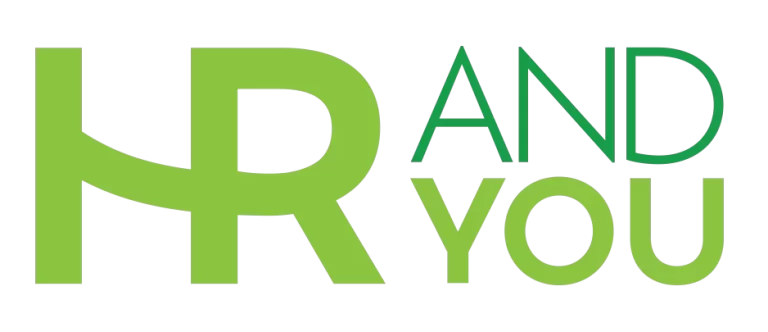
Company No 11992982
You get no hidden fees, just one low monthly fee based on how many Employees you have. You have no long Contract terms, guaranteed.
Made by Pixelmate
